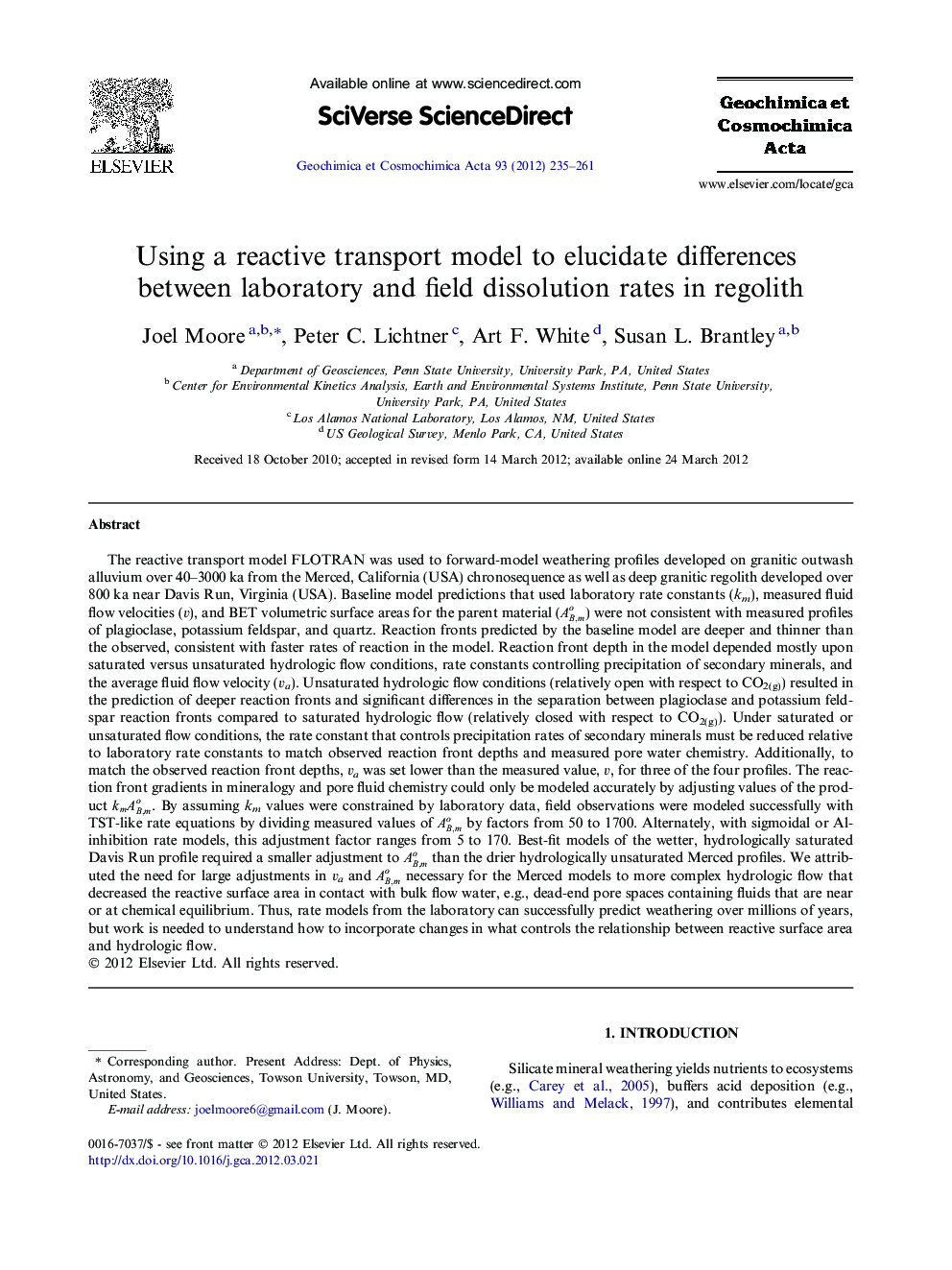| کد مقاله | کد نشریه | سال انتشار | مقاله انگلیسی | نسخه تمام متن |
|---|---|---|---|---|
| 4702734 | 1638064 | 2012 | 27 صفحه PDF | دانلود رایگان |

The reactive transport model FLOTRAN was used to forward-model weathering profiles developed on granitic outwash alluvium over 40–3000 ka from the Merced, California (USA) chronosequence as well as deep granitic regolith developed over 800 ka near Davis Run, Virginia (USA). Baseline model predictions that used laboratory rate constants (km), measured fluid flow velocities (v ), and BET volumetric surface areas for the parent material (AB,mo) were not consistent with measured profiles of plagioclase, potassium feldspar, and quartz. Reaction fronts predicted by the baseline model are deeper and thinner than the observed, consistent with faster rates of reaction in the model. Reaction front depth in the model depended mostly upon saturated versus unsaturated hydrologic flow conditions, rate constants controlling precipitation of secondary minerals, and the average fluid flow velocity (va). Unsaturated hydrologic flow conditions (relatively open with respect to CO2(g)) resulted in the prediction of deeper reaction fronts and significant differences in the separation between plagioclase and potassium feldspar reaction fronts compared to saturated hydrologic flow (relatively closed with respect to CO2(g)). Under saturated or unsaturated flow conditions, the rate constant that controls precipitation rates of secondary minerals must be reduced relative to laboratory rate constants to match observed reaction front depths and measured pore water chemistry. Additionally, to match the observed reaction front depths, va was set lower than the measured value, v , for three of the four profiles. The reaction front gradients in mineralogy and pore fluid chemistry could only be modeled accurately by adjusting values of the product kmAB,mo. By assuming km values were constrained by laboratory data, field observations were modeled successfully with TST-like rate equations by dividing measured values of AB,mo by factors from 50 to 1700. Alternately, with sigmoidal or Al-inhibition rate models, this adjustment factor ranges from 5 to 170. Best-fit models of the wetter, hydrologically saturated Davis Run profile required a smaller adjustment to AB,mo than the drier hydrologically unsaturated Merced profiles. We attributed the need for large adjustments in va and AB,mo necessary for the Merced models to more complex hydrologic flow that decreased the reactive surface area in contact with bulk flow water, e.g., dead-end pore spaces containing fluids that are near or at chemical equilibrium. Thus, rate models from the laboratory can successfully predict weathering over millions of years, but work is needed to understand how to incorporate changes in what controls the relationship between reactive surface area and hydrologic flow.
Journal: Geochimica et Cosmochimica Acta - Volume 93, 15 September 2012, Pages 235–261